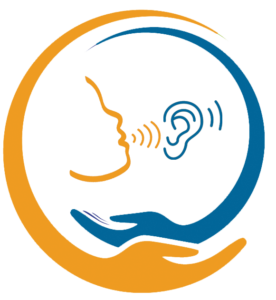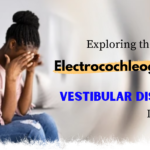Exploring The Role of ECochG or ECoG in Vestibular Disorder Diagnosis
Electrocochleography (ECoG) serves as a specialized diagnostic examination aimed at assessing the electrical activity within the inner ear, specifically targeting the cochlea responsible for the auditory sense. In recent times, ECoG has gained recognition as a valuable diagnostic tool for vestibular disorders, particularly those impacting both auditory and balance functions. This article delves into the intricacies of ECoG, exploring its role of ECoG in Vestibular Disorder, clinical applications, and limitations.
Understanding Vestibular Disorders
Vestibular disorders encompass a spectrum of conditions disrupting the vestibular system, the intricate mechanism responsible for preserving balance and spatial orientation. The vestibular system includes inner ear components such as the semicircular canals, utricle, and saccule, along with the vestibular nerve pathways connecting to the brain. These components collaboratively detect head movements and transmit information to the brain, facilitating the maintenance of balance and coordination of movements.
Symptoms of vestibular disorders can exhibit diverse characteristics, commonly featuring
- Dizziness: Characterized by sensations of lightheadedness, wooziness, or vertigo, often triggered by head movements or specific activities.
- Vertigo: Involving a misleading perception of movement or spinning, frequently accompanied by nausea and vomiting.
- Tinnitus: Marked by a perception of ringing, buzzing, or hissing sounds in the ears.
- Hearing loss: Signifying a decrease in the ability to perceive sounds.
- Gait instability: Leading to unsteadiness or clumsiness during walking or standing.
Common Vestibular Disorders
Various conditions can disturb the vestibular system, resulting in disorders associated with this sensory system. Among the commonly observed vestibular disorders are
- Ménière’s disease: Ménière’s disease is characterized by intermittent episodes of vertigo, hearing loss, tinnitus, and a sensation of fullness in the ear. The origin of Ménière’s disease is believed to be an imbalance in inner ear fluids, specifically an excess of endolymphatic fluid.
- Vestibular migraine: Vestibular migraine represents a subtype of migraine headaches where the predominant symptoms involve the vestibular system rather than traditional head pain. This condition is thought to be associated with heightened activity in the vestibular system.
- Noncancerous Vestibular Nerve Tumor: Vestibular Schwannoma is a benign tumor affecting the vestibular nerve, impacting both balance and hearing. Originating from Schwann cells that provide support to nerve cells, this tumor can disrupt the normal functioning of the vestibular system.
The Role of ECoG in Vestibular Disorder Diagnosis
Electrocochleography is a pivotal tool in diagnosing vestibular disorders by offering objective assessments of cochlear function. In contrast to audiometry, which measures hearing thresholds, ECoG examines the electrical activity of the cochlea in response to auditory stimuli. This detailed data aids clinicians in understanding the health and functionality of the cochlea, crucial for both hearing and balance.
Electrocochleography Procedure
An ECoG test typically involves the following steps
- Preparation: Patients lie comfortably on an examination table, with the ear canal cleaned to ensure precise electrode placement.
- Electrode Placement: Electrodes are positioned near the ear canal, typically utilizing small adhesive patches or earmolds.
- Auditory Stimuli: Auditory stimuli, such as clicks or tones, are administered through headphones or bone conduction vibrators.
- Signal Recording: The electrical potentials generated by the cochlea in response to auditory stimuli are recorded and displayed on a computer screen.
- Interpretation: Experienced audiologists or neurotologists analyze the recorded potentials to evaluate cochlear function.
Findings Electrocochleography (ECochG) in Vestibular Disorders
While Electrocochleography (ECoG) outcomes are not universally conclusive, they can offer valuable diagnostic indications in vestibular disorders
- Ménière’s disease: ECoG might unveil a diminished amplitude of the summating potential (SP), indicative of endolymphatic hydrops—a fluid accumulation in the inner ear linked to Ménière’s disease.
- Vestibular migraine: ECochG irregularities in vestibular migraines may vary, encompassing potential reductions in SP amplitude and alterations in wave V morphology.
- Vestibular Schwannoma: Electrocochleography (ECochG) could exhibit a lowered amplitude in both SP and action potential (AP), reflecting the compression of cochlear structures due to the tumor.
Clinical Applications of ECoG in Vestibular Disorders
The clinical applications of ECoG in vestibular disorders extend beyond diagnosis
- Monitoring disease progression: Electrocochleography serves to track the advancement of vestibular disorders, like Ménière’s disease, and evaluate treatment responses. Observing changes in ECochG findings allows clinicians to assess treatment efficacy and identify any deterioration in the condition.
- Differentiating vestibular disorders: The specific ECoG abnormality patterns aid clinicians in narrowing down potential diagnoses and guiding further investigations. For instance, the presence of reduced SP amplitude and altered wave V morphology may suggest vestibular migraine, while a combination of reduced SP and AP amplitudes may point to vestibular Schwannoma.
- Predicting treatment outcomes: ECoG findings may forecast treatment outcomes in certain vestibular disorders, such as Ménière’s disease, providing guidance for treatment decisions. For instance, patients with more pronounced ECoG abnormalities may necessitate more aggressive treatment interventions.
Why Do You Need the Best Electrocochleography Test for Your Ears?
Limitations of Electrocochleography
Despite its valuable role of ECoG in Vestibular Disorder management, ECoG has limitations that should be considered:
- Technical complexity: ECoG demands specialized equipment and expertise, limiting its widespread availability. Not all audiology clinics or medical centers possess the requisite resources for conducting ECoG testing.
- Variable interpretation: ECoG findings can be intricate and require careful interpretation by experienced clinicians. Accurate analysis of ECoG results demands a comprehensive understanding of test methodology and the subtleties of vestibular disorders.
- Not always definitive: ECoG findings may not always provide unequivocal conclusions, requiring integration with other clinical information. In certain cases, ECoG results might not offer a definitive diagnosis, prompting further evaluation through additional diagnostic tests, such as vestibular function tests or imaging studies.
Approximate Percentage of ECoG in Vestibular Disorder Diagnosis
As per a recent publication in the journal “Neurology,” ECoG demonstrates an estimated sensitivity of 75% and specificity of 85% in diagnosing Ménière’s disease, establishing its reliability for detecting this condition. Sensitivity and specificity for other vestibular disorders, such as vestibular migraine and vestibular Schwannoma, may vary based on specific diagnostic criteria and the clinician’s expertise.
Conclusion
Electrocochleography (ECochG or ECoG) plays a crucial role in diagnosing and managing vestibular disorders, offering objective assessments of cochlear function. This aids in the identification and differentiation of vestibular disorders, monitoring disease progression, and predicting treatment outcomes. While acknowledging limitations, the utilization of ECoG in vestibular disorder management is anticipated to broaden as ongoing research and clinical experience refine its applications.
𝐼𝑓 𝑦𝑜𝑢’𝑟𝑒 𝑙𝑜𝑜𝑘𝑖𝑛𝑔 𝑓𝑜𝑟 𝑎 𝐵𝑒𝑠𝑡 𝐻𝑒𝑎𝑟𝑖𝑛𝑔 𝑎𝑖𝑑 𝐶𝑙𝑖𝑛𝑖𝑐 𝑓𝑜𝑟 𝑦𝑜𝑢 𝑜𝑟 𝐻𝑒𝑎𝑟𝑖𝑛𝑔 𝑖𝑚𝑝𝑎𝑖𝑟𝑚𝑒𝑛𝑡 𝑠𝑒𝑟𝑣𝑖𝑐𝑒 𝑖𝑛 𝐾𝑜𝑙𝑘𝑎𝑡𝑎, 𝑡ℎ𝑒𝑛 𝐴𝑢𝑟𝑎𝑙𝑐𝑎𝑟𝑒 𝑖𝑠 𝑡ℎ𝑒 𝑟𝑖𝑔ℎ𝑡 𝑝𝑙𝑎𝑐𝑒 𝑓𝑜𝑟 𝑦𝑜𝑢!
About Aural Care

Aural Care is the Best Hearing Aid Clinic in Kolkata offering high quality facilities with lots of experienced doctors. We have 15 years experience in this field. Here, we offer the most comprehensive diagnostic facilities and the latest and best technology in hearing aids.
Address: GB7, 822, Rajdanga Main Road . Opp. GST Bhawan. Kol 700107
Phone: +91 98315 37979
Mail: info@auralcarekolkata.in
Follow us
Facebook: facebook.com/AuralCareCenterKolkata
Instagram: instagram.com/auralcarecenter

